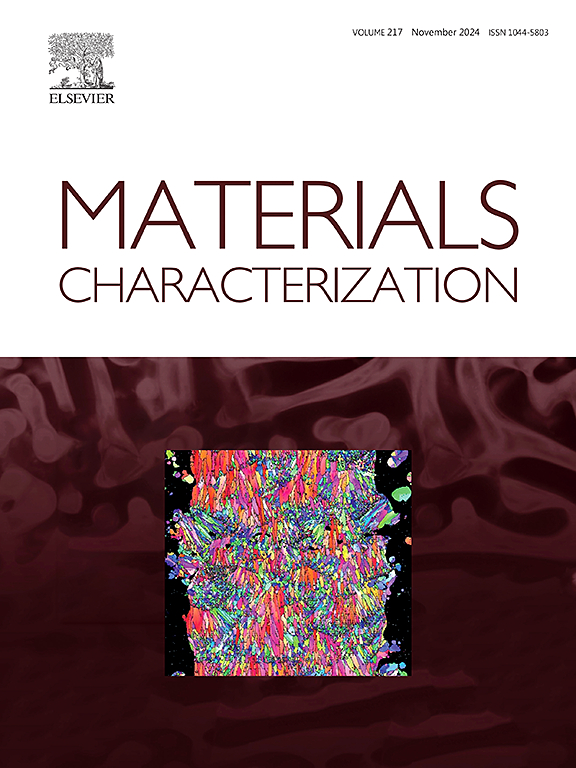Effect of the structure and composition of grain boundary phases on the pinning strength of domain wall in nanocrystalline PrNd-Fe-B magnets
IF 4.8
2区 材料科学
Q1 MATERIALS SCIENCE, CHARACTERIZATION & TESTING
引用次数: 0
Abstract
The critical role of grain boundary phases (GBPs) in the magnetic properties, c-axis texture, and pinning strength (PS) of domain walls (DWs) in nanocrystalline PrNd-Fe-B magnets was systematically investigated. The microstructural results show that with rare earth (RE) content increasing, the GBPs are optimized (the volume fraction is enhanced and the composition of GBPs is improved). This leads to an increase of coercivity, squareness factor, and temperature stability. At the thermally demagnetized state, the DWs are straight across the majority of thin ferromagnetism GBPs in low RE content magnets; the DWs are desultory and disappeared at nonferromagnetic thick GBPs in high RE content magnets. Furthermore, in situ observations of the magnetic domain evolutions suggest that the pinning mechanism plays a dominant role in determining the coercivity. With the optimization of GBPs, the coercivity mechanism transforms from inhomogeneous weak pinning to homogeneous strong pinning. Further study found that there exists an exponential function relationship between the average Nd + Pr concentration in the GBPs and PS of DWs. In addition, the weak pinning GBPs are characterized by discontinuous or continuous but thin structure and have low Nd + Pr content. The strong pinning GBPs are characterized by hybrid structure and have high Nd + Pr content, or by the continuous thick GBPs even without high Nd + Pr content.
求助全文
约1分钟内获得全文
求助全文
来源期刊

Materials Characterization
工程技术-材料科学:表征与测试
CiteScore
7.60
自引率
8.50%
发文量
746
审稿时长
36 days
期刊介绍:
Materials Characterization features original articles and state-of-the-art reviews on theoretical and practical aspects of the structure and behaviour of materials.
The Journal focuses on all characterization techniques, including all forms of microscopy (light, electron, acoustic, etc.,) and analysis (especially microanalysis and surface analytical techniques). Developments in both this wide range of techniques and their application to the quantification of the microstructure of materials are essential facets of the Journal.
The Journal provides the Materials Scientist/Engineer with up-to-date information on many types of materials with an underlying theme of explaining the behavior of materials using novel approaches. Materials covered by the journal include:
Metals & Alloys
Ceramics
Nanomaterials
Biomedical materials
Optical materials
Composites
Natural Materials.
 求助内容:
求助内容: 应助结果提醒方式:
应助结果提醒方式:


